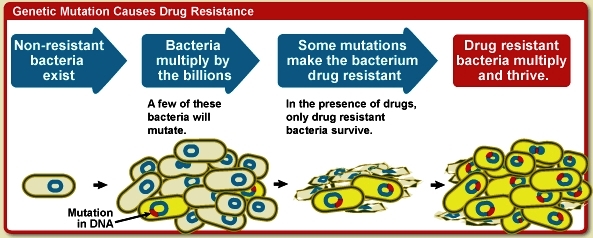It is estimated that 1 gram of soil can be inhabited by up to 109 microorganisms and approximately 60,000 bacterial species. Moreover, soil harbors a vast reservoir of antimicrobial agents, and soil-dwelling bacteria have played a key role in the introduction of antibiotics to treat infectious diseases. Because these resilient bacteria not only produce antibiotics but also are exposed to other antibiotics produced by surrounding strains in the soil, they have developed diverse mechanisms to survive the toxic antimicrobial compounds created around them. Importantly, these mechanisms of robust resistance to numerous classes of antibiotics often resemble the mechanisms of resistance identified in clinical pathogens, including those that infect humans. Thus, scientists are attempting to find possible correlations between antibiotic resistance in soil bacteria and in infectious agents in humans. If correlations can be found, investigators might be able to predict future signs of clinical resistance to certain antibiotics, providing clinicians with methods to circumvent any potential resistance that may emerge. See also: Antibiotic; Antimicrobial agents; Antimicrobial resistance; Bacteria; Clinical microbiology; Drug resistance; Infectious disease; Medical bacteriology; Microbiology; Pathogen; Soil; Soil microbiology

Approximately 80% of clinically implemented antibiotics are derived from soil bacteria, particularly members of the bacterial group Actinobacteria (Actinomycetes); many belong to the Streptomyces genus. Furthermore, these bacteria have evolved sophisticated tactics to impair the growth of neighboring strains, and researchers have been focusing more attention on the exact mechanisms of resistance that are employed. For example, vancomycin (isolated originally from the soil bacterium Amycolatopsis orientalis) is an important antibiotic often used to fight serious skin infections and drug-resistant staphylococcal infections [for example, methicillin-resistant Staphylococcus aureus (MRSA)]. Its mechanism of action involves an essential molecular component of the bacterial cell wall, and resistance to this antibiotic occurs via enzymes that create conditions that hamper the binding of this drug to the cell wall. Intriguingly, this method of resistance was found to be identical both in the clinical setting with humans and in soil bacteria. Therefore, an understanding of the unique resistance mechanisms utilized by soil bacteria in general can help establish means by which to analyze and anticipate clinical resistance. It is hoped that comprehension of antibiotic evasion in the soil environment will provide researchers with better tools to minimize future instances of resistance and to allow more time for alternative therapies to be implemented. See also: Actinomycetes; Infection; Methicillin-resistant Staphylococcus aureus (MRSA); Rise of antibiotic resistance in bacteria; Staphylococcus





